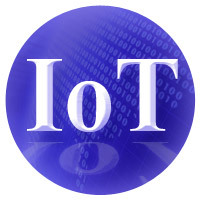
The era of digital transformation and the digital business, the customer experience as a key differentiator, and the movement toward smart machines are some of the common themes Gartner Distinguished Analyst Don Scheibenreif touched on in his keynote last week at the Gartner Customer 360 Summit in San Diego.
These are all phenomena that have been on their way for a little while. Taken as a group, they’re like a glacier — but perhaps the fastest glacier ever. They’re not moving at a speed that’s freaking anyone out yet, though.
However, a slide suggesting what the Internet of Things will mean to an ordinary consumer was thought-provoking. It depicted an urban environment in which parking meters were talking to cars, businesses were sensing when customers were in proximity, and where there was a nearly infinite flow of signals and data.
Cacophony of Data
We’re used to hearing about home appliances generating data, whether they be alerts about refrigerator filters or the numbers generated by Marc Benioff’s famous electric toothbrush.
Taken individually, these signals seem straightforward enough. As it evolves, however, the IoT will generate a lot more data.
There will be as many as 500 connected devices in every home, Gartner analyst Gareth Herschel estimated. Add to that sensors in commercial equipment and facilities, vehicles, and other smart things consumers own or interact with, and that’s a lot of data.
If every data stream can trigger an activity, the result can be helpful — to a point. However, what we may see among these data streams is cacophony — a surge of signals and alerts that outstrip the human ability to process them.
How do we deal with this? At a certain point, we need to rely on an automated way to sort, evaluate and prioritize these signals — not for the people on the marketing and sales side of the equation, who already are being provided for to a degree. What will be needed is a platform for signaling to humans which of these signals are worth paying attention to, and which are worth paying attention to first.
Customization and Control
The key word here is “prioritization.” A prioritization platform should come with some built-in logic for dealing with IoT traffic but also should be personalized easily, so users have genuine control of the data they’re being alerted to, as well as the order in which the alerts come.
Some things are obvious — alerts from your smoke alarm are more important than those from your furnace filter, for example. Humans will want to deal with a lot of other data in a manner of their choosing — and some they’re going to want to ignore entirely. That’s why customization will be critical.
Control and customization no doubt will be delivered through a mobile device, which positions smartphone manufacturers and OS creators as potentially the most important vendors in our future.
There are personal and political implications to the position of leader in this yet-to-emerge space, and if you thought the Mac-PC fanboy wars were fierce, just wait until people are arguing about which IoT prioritization application is the best to help them run their lives.
Data Priority Management
There’s been a need for prioritization software in the past, and we’ve missed the boat, in most cases. The most recent opportunity was in social CRM — before it reverted to being just CRM again.
Truly social CRM would have allowed businesses to engage in social discussions in a prioritized way. Being part of every discussion in an authentic way is all but impossible, but developing the ability to prioritize which discussions are the most important or involve the most influential participants is achievable.
It would be more easily achievable with a tool to automate the process of prioritizing discussions based on specific criteria selected by the user. That would have been an awesome addition to CRM applications, but it remains the territory of niche providers.
Hopefully, the opportunity presented for individual prioritization of IoT data won’t go neglected. The potential size of the market should prevent that. When the prioritization nut is cracked, the IoT will go from being a theoretical concept that affects us obliquely to a concrete, ever present component of our lives that we’ll need to manage — and it will create opportunities for us to help our customers in that management.




















































